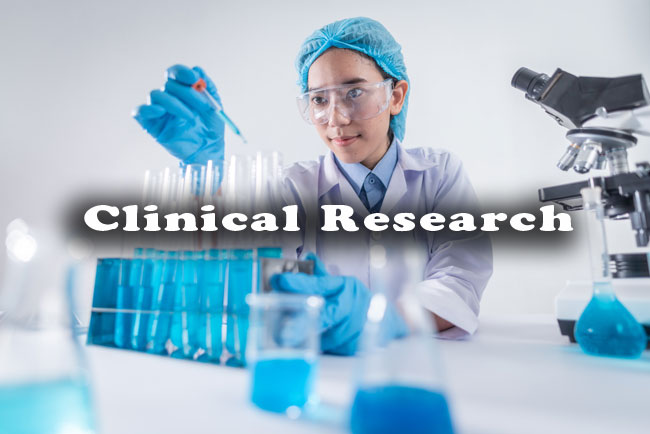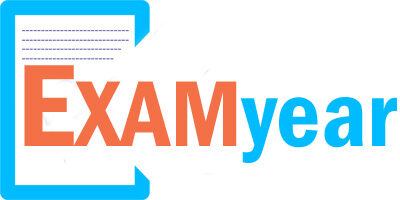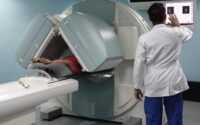Clinical Research Objective Question
Checking all the Clinical Research Objective Papers!! Later, check the Latest Clinical Research Associate Exam Objective. Clinical Research Coordinator Objective Papers pdf Free Download available here. Hence, candidates who are going to write exam may download Clinical Research Assistant Objective for free of cost.

Aspirants can also get Clinical Research Objective Question Papers. Clinical Research Nurse Objective Papers are uploaded here to help the candidates who are appearing for the Exam. The Applicants who are about to start their preparation for the Exam can refer to the Basic Clinical Research Objective Question papers. So, interested candidates can click on the direct links given below for downloading the Clinical Research Objective Papers along with Solutions or Answer Keys for freshers.
Objective Question on Clinical Research
1. In Elisa technique, the antibodies are labeled by:
(a) Acridine orange
(b) Alkaline phosphate
(c) Neutral red
(d) Bromothymol blue
2. The suitable assay method for antibiotics is:
(a) Enzymatic assay
(b) Turbidometric assay
(c) End point determination assay
(d) Metabolic assay
3. Which of the following test is specific for Brucellosis?
(a) Frei
(b) Weil
(c) Castaneda strip
(d) Rose water
4. Biological false reaction in VDRL is related to
(a) Lepra bacilli
(b) Corynebacterium diphtheria
(c) Cl.welchi
(d) None of these
5. How many phases are involved in a clinical trial?
(a) 2
(b) 3
(c) 4
(d) 5
6. Which of the following is not correct on the basis of clinical trials?
(a) Biomedical research studies
(b) Behavioral research studies
(c) Studies on human subjects
(d) Study based only on animals
7. What is meant by a blind subject?
(a) The subjects do not know which study treatment they receive
(b) Patients injected with placebo and active doses
(c) Fake treatment
(d) Signed document of the recruited patient for the clinical trial procedures
8. Which one of the following describes “double dummy”?
(a) The subjects do not know which study treatment they receive
(b) Patients injected with placebo and active doses
(c) Fake treatment
(d) Signed document of the recruited patient for the clinical trial procedures
9. What is informed consent in a clinical trial?
(a) The subjects do not know which study treatment they receive
(b) Patients injected with placebo and active doses
(c) Fake treatment
(d) Signed document of the recruited patient for the clinical trial procedures
10. What is meant by “compliance” in a randomized clinical trial?
(a) Flexibility in assignment to treatment groups.
(b) The degree to which study subjects adhere to an assigned treatment protocol.
(c) An inter-institutional agreement for a multi-center study.
(d) Benefits for people who enroll in the study.
11. Which of the following is the best explanation regarding the relationship between compliance and “bias toward the null” in a clinical trial?
(a) Noncompliance will make the groups appear to be MORE similar, and the apparent strength of association will be diminished.
(b) Noncompliance will make the groups appear to be LESS similar, and the apparent strength of association will appear to be stronger than it really is.
(c) Noncompliance has no effect (a null effect) on the relative risk.
(d) None of the above.
12. The fact that certain types of people agree to participate in clinical trials may affect which of the following?
(a) Validity
(b) Generalizability
(c) Randomization
(d) Sub-group analysis
13. The function of b subunit of polymerase is
(a) Template binding
(b) Catalytic binding
(c) Promoter binding
(d) Cation binding
14. True replication of DNA is due to
(a) Phosphate backbone
(b) Hydrogen bonding
(c) Complementary base pairing rule
(d) None
15. Mode of DNA replication is
(a) Conservative and bidirectional
(b) Semiconservative and unidirectional
(c) Semiconservative and bidirectional
(d) Conservative and unidirectional
16. Which of the following processes does not occur in prokaryotes?
(a) Transcription
(b) Splicing
(c) Translation
(d) Replication
17. cDNA is synthesised from RNA by the enzyme
(a) DNA polymerase
(b) DNA synthetase
(c) DNA convertase
(d) Reverse transcriptase
18. Which of the following base-pairing rule is correct?
(a) Adenine with guanine and thymine with cytosine
(b) DNA base pairing is non-specific
(c) Adenine with cytosine and guanine with thymine
(d) Adenine with thymine and guanine with cytosine
19. DNA synthesis can be measured by estimating the incorporation of radiolabelled
(a) Thymine
(b) Guanine
(c) Cytosine
(d) Adenine
20. How many RNA polymerases are present in a bacterial system?
(a) 4
(b) 2
(c) 1
(d) 3
| Interview Question | MCQs |
| Objective | Questions and Answers |
21. During DNA replication the synthesis of the leading strand of DNA results in fragments known as
(a) Okazaki fragments
(b) Satellite segments
(c) Kornberg segment
(d) Double-helix segment
22. Which of the following proteins is most useful in detecting rejection of transplanted kidneys?
(a) b2 –macroglobulin
(b) a2 -macroglobulin
(c) Lysozyme
(d) C-reactive protein
23. Hypothesis of Biomarker research by proteomics is based on all except:
(a) Proteins are differentially expressed from their genes during a disease process
(b) Proteins are subject to differential post-translational modifications due to disease-specific changes in the activity of enzymes
(c) Proteins are NOT detectable in different amounts due to altered production, degradation or release from cells by the disease process.
(d) All of the above.
24. Hormone status in breast cancer is established by:
(a) ER
(b) PR
(c) Her-2-neu
(d) All of the above
25. All are tumour markers except:
(a) Alfa-feto protein
(b) Prostate specific antigen
(c) Myoglobin
(d) CEA
26. Exfoliative cytology is used in the diagnosis of which cancers:
(a) Buccal mucosa
(b) Cervix
(c) Lung
(d) All of the above.
27. Tumour suppressor genes are all except:
(a) Rb
(b) APC
(c) p53
(d) cyclin D1
28. Types of Proteomics are all except:
(a) Translational proteomics
(b) Expression proteomics
(c) Functional proteomics
(d) Structural proteomics
29. Cancerous cells are more easily damaged by radiation than normal cells as they
(a) Differ in structure
(b) Undergo rapid division
(c) Are nutrition-starved
(d) None of these
30. The nucleus of cancerous cells becomes
(a) Unchanged
(b) Degenerated
(c) Abnormally large
(d) Hypertrophied
31. What is the origin of the cancerous cells?
(a) Monoclonal
(b) Polyclonal
(c) Stem cells
(d) Mesodermal cells
32. Which of the following is NOT an example of proto-oncogenes?
(a) Rb
(b) Src
(c) Myc
(d) Abl
33. Which of the following mutation causes Burkitt’s lymphoma?
(a) Point mutation
(b) Chromosomal translocation
(c) Deletion
(d) Duplication
34. Which of the following chromosomal alteration causes retinoblastoma?
(a) Deletion in chromosome 11
(b) Translocation between chromosome 9 and 22
(c) Deletion in chromosome 13
(d) Translocation between chromosome 8 and 21
35. If DNA is damaged, which of the following gene arrest cell cycle?
(a) Rb
(b) p53
(c) Hedgehog receptor
(d) p16
36. Name the chemical carcinogen which causes prostate cancer.
(a) Radon
(b) Arsenic
(c) Cadmium
(d) Asbestos
37. Which enzymes convert pro carcinogens into ultimate carcinogens?
(a) Acetylases
(b) Cytochrome P 650
(c) Cytochrome P 450 enzyme system
(d) Hydrolases
38. Aflatoxin is a ______
(a) Natural carcinogen
(b) Man-made carcinogen
(c) Synthesized carcinogens
(d) None of these
39. Philadelphia chromosome is:
(a) t(9;22)(q34;q11)
(b) t(22;9)(q34;q11)
(c) t(9:22)(q11;q34)
(d) t(9:22)(p34;q11)
40. All are examples of Paraneoplastic syndromes except:
(a) Cushing syndrome
(b) Red cell aplasia
(c) Hypercalcemia
(d) Osteoporosis
41. FIGO Staging is done for:
(a) Gynaecologic cancers
(b) Testicular tumours
(c) Breast cancers
(d) ENT cancers.
42. Which of the following statements is true about the ends of the chromosome?
(a) The ends of the chromosome are called Satellites
(b) The ends of the chromosome are called Centromeres
(c) The ends of the chromosome are called Telomeres
(d) The ends of the chromosome are called Kinetochore
43. Radiogenic therapy is a method of radiation used to stimulate the formation of cell killing agents known as ______ agents.
(a) Toxic
(b) Poisonous
(c) Cytotoxic
(d) Intratoxic
44. Which of the following is least often considered a factor influencing the type of radiation chosen?
(a) Type and size of tumor
(b) Location of tumor
(c) Proximity to normal tissues that are sensitive to radiation
(d) Gender of patient receiving the treatment
45. In human studies, which of these events were not accompanied by stressful experiences?
(a) Early death following stem cell transplants
(b) Progression of cancer
(c) Cancer related mortality
(d) Development of cancer
46. Which of these is an action through which stressful events can influence the growth of existing tumors?
(a) Hormones
(b) Neurotransmitter
(c) Immune changes
(d) All of the above.
47. Which of these ‘superfoods’ have been associated with a reduction in cancer risk?
(a) Kale
(b) Goji berries
(c) Garlic
(d) There is generally no scientific evidence to support ‘superfoods’ and reduced cancer risk
48. For frozen section, tissue should be sent in:
(a) 10 % formalin
(b) Carnay’s solution
(c) Normal saline
(d) Fresh unfixed.
49. Stem cell research consists of:
(a) Human cells grown in vitro
(b) Plant cells grown in vitro
(c) Synonymous with PCR
(d) gene Therapy
50. Bacteria implicated in Gastric cancers:
(a) Salmonella
(b) H. Pylori
(c) Mycobacterium
(d) Streptococcus



